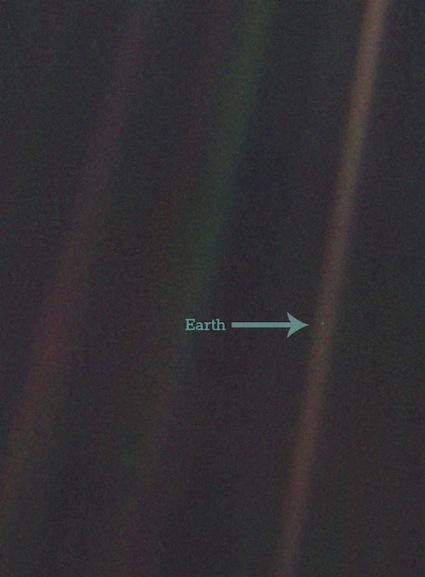
“A mote of dust suspended in a sunbeam,” said astronaut and author Carl Sagan in his reflections on the Pale Blue Dot, a photograph of Planet Earth taken at his suggestion, by Voyager 1.
We have ascribed the description to Obi—our second protagonist and the mote that inspired our narrative.
—“Obi was as light as a speck of dust and he could only be seen under a sunbeam, but Obi did not know this.”
Obi is not Sagan’s pale blue dot; he lacks the personal significance.
Consider again that dot. That’s here, that’s home, that’s us… every saint and sinner in the history of our species lived there—on the mote of dust suspended in a sunbeam. – Carl Sagan
(click to hear the original speech, in audio)
Obi is a tiny, amorphous bit of matter, ordinary and easy to ignore.
—“He (Obi) tried very hard to get other creatures to notice him. He bounced on their heads and gave them dot hugs, yet he did not get any attention.”
However, in the microscopic community, Obi occupies a vibrant place, one among a variety of dust particles—little dots that share our surroundings and represent our world.
A dust particle is an amalgamation of material from cosmic minerals, pollen, and grains of sand to our disposed skin cells. By nature, a dust particle contains nothing unique, just like you and me. And yet, it has its own composition.
Dust is you, dust is me, dust is us in unity.
I see you Obi!
—“…The thought made Obi glow from top to bottom and side to side. The sunbeam knew then that its work was done, and it moved away. Obi could now be seen without any help.”

How true! A human being comes from dust and ultimately gets reduced to dust. The knowledge is there, but the realization is not.